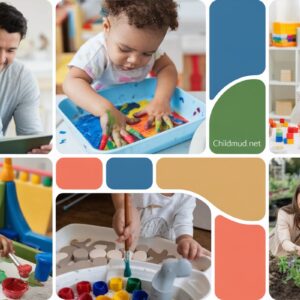Caste貌, a term that has appeared in popular puzzles such as The New York Times quick crossword, invites curiosity and deep reflection.
Though its specific definition might seem elusive, exploring its origins, impact, and relevance offers valuable insights into societal structures and cultural dynamics.
This article delves into the intricate world of caste貌, providing a comprehensive and informative exploration that surpasses existing online sources.
Origins of Caste貌
Historical Context
The concept of caste貌 can be traced back to ancient civilizations, where social hierarchies and divisions were established to maintain order and distribute responsibilities.
One of the earliest known systems is the Varna system in ancient India, which categorized society into four main groups: Brahmins (priests and scholars), Kshatriyas (warriors and rulers), Vaishyas (merchants and traders), and Shudras (laborers and service providers).
Evolution Over Time
Over centuries, the Varna system evolved into a more complex network known as the Jati system, comprising thousands of sub-castes based on specific occupations, birth, and lineage.
This system became deeply entrenched in social practices, dictating marriage, dining, and religious rituals, thus shaping every aspect of life.
Global Parallels
While caste貌 is often associated with India, similar systems of social stratification have existed globally.
For instance, Japan’s Edo period featured a rigid class hierarchy, and Europe’s feudal system categorized people into nobility, clergy, and peasants.
These structures, although different in form, similarly restricted social mobility and defined roles based on birth.
Impact of Colonialism on Caste貌
British Colonial Rule in India
The British colonial administration in India significantly influenced the caste system.
By categorizing and codifying castes through censuses and legal frameworks, the British inadvertently reinforced and rigidified these social divisions.
The introduction of terms like “Scheduled Castes” and “Scheduled Tribes” aimed to identify and support marginalized groups, yet also perpetuated stigmatization.
Caste in Other Colonized Regions
Colonial powers employed similar strategies in other regions. In Africa, ethnic and tribal identities were manipulated to divide and rule. In Latin America, the Spanish and Portuguese implemented a caste-like “Casta” system, categorizing individuals based on racial ancestry and creating lasting social hierarchies.
Caste貌 in Modern India
Legal and Constitutional Measures
India’s post-independence era marked significant efforts to dismantle the caste system.
The Indian Constitution, adopted in 1950, abolished untouchability and prohibited discrimination based on caste.
Articles 15 and 17 specifically aim to eliminate caste-based discrimination and protect marginalized communities.
Affirmative Action Policies
To promote social equality, affirmative action policies were implemented, reserving seats in educational institutions, government jobs, and legislative bodies for Scheduled Castes (SC), Scheduled Tribes (ST), and Other Backward Classes (OBC). These measures aim to provide opportunities for historically disadvantaged groups and bridge socio-economic gaps.
Social Movements and Activism
Figures like Dr. B.R. Ambedkar, a key architect of the Indian Constitution and a prominent Dalit leader, advocated for the rights of lower castes.
Contemporary movements, such as the Dalit Rights Movement, continue to fight against caste-based violence and discrimination, using legal action, public protests, and grassroots organizing to demand justice and equality.
Caste in Urban and Rural Contexts
In rural areas, caste identities often remain deeply entrenched, influencing social interactions and access to resources.
Traditional hierarchies persist, and caste-based discrimination is more pronounced. In contrast, urban areas tend to offer greater anonymity and opportunities for social mobility, though discrimination still exists in subtler forms.
Caste貌 in the Global Diaspora
Indian Diaspora and Caste
Caste identities and practices have traveled with the Indian diaspora, influencing community interactions, religious practices, and professional networks in countries like the United States, United Kingdom, and Canada.
Recent studies highlight that caste-based discrimination persists in these communities, prompting advocacy and awareness campaigns.
Comparative Perspectives
Globally, similar systems of social stratification exist. In the United States, systemic racism and socio-economic class divisions parallel the rigid hierarchies of caste.
Efforts to combat racial discrimination and promote equity share similarities with anti-caste movements in India.
In Latin America, the legacy of the Casta system influences contemporary issues of race and class.
Contemporary Challenges and Criticisms
Persistence of Discrimination
Despite legal protections and affirmative action policies, caste-based discrimination remains a significant issue.
Reports of violence against Dalits, honor killings for inter-caste marriages, and systemic exclusion highlight ongoing challenges.
Economic Disparities
Caste continues to influence economic opportunities and outcomes. Dalits and lower-caste individuals often face barriers in accessing education, employment, and capital, perpetuating cycles of poverty and limiting social mobility.
Intersectionality
Caste intersects with other social identities like gender, religion, and class. Dalit women, for instance, face compounded discrimination due to their caste and gender.
Understanding these intersecting oppressions is crucial for addressing the full scope of caste-based injustices.
Criticisms of Affirmative Action
While affirmative action policies have had positive impacts, they are not without criticism.
Some argue these measures have led to reverse discrimination and dependency.
Debates continue about the criteria and implementation of these policies, with calls for more nuanced and inclusive approaches.
The Path Forward: Addressing Caste貌 in the 21st Century
Education and Awareness
Raising awareness about caste and its implications is vital for combating discrimination. Educational programs that teach the history and impact of the caste system can foster understanding and empathy.
Media and cultural representations also play a role in shaping perceptions and challenging stereotypes.
Legal Reforms
Strengthening legal frameworks to protect against caste-based discrimination and violence is essential.
This includes enforcing existing laws, improving access to justice for marginalized communities, and developing new policies that address contemporary forms of discrimination.
Economic Empowerment
Economic empowerment initiatives, such as skill development programs, entrepreneurship support, and microfinance opportunities, can help bridge the socio-economic gap. Ensuring equal access to education and employment is critical for fostering social mobility.
Social Movements and Advocacy
Supporting and amplifying the voices of social movements and activists is crucial for driving change. Grassroots organizing, public protests, and legal advocacy can challenge systemic injustices and promote social equity.
Global Solidarity
Building global solidarity and learning from other social justice movements can enhance efforts to combat caste-based discrimination. International organizations and diasporic communities can play a pivotal role in raising awareness and advocating for inclusive policies.
Conclusion
Caste貌, as a social system, has deeply influenced societies for centuries, shaping identities, relationships, and opportunities. Understanding its historical roots and contemporary manifestations is crucial for addressing the ongoing challenges it poses. While significant progress has been made in combating caste-based discrimination, much work remains to be done.
By promoting education, legal reforms, economic empowerment, and global solidarity, we can work towards a more just and equitable society. Embracing the diversity and complexity of human identities, and striving for inclusivity and equality, will help dismantle the remnants of caste and build a future where everyone can thrive.
FAQs
1. What does “caste貌” mean in The New York Times crossword?
Caste貌 is a term used in puzzles to denote a challenging word or clue. It has been seen in The New York Times quick crossword, sparking interest in its meaning and implications.
2. Is “caste貌” a common term outside of puzzles?
While primarily known in puzzle contexts, caste貌 can spark broader discussions about language, social structures, and cultural dynamics.
3. Can “caste貌” be translated into other languages?
The translatability of caste貌 depends on its contextual usage. It may not have a direct translation in some languages but can be interpreted based on its cultural significance.
4. What cultural insights can we glean from “caste貌”?
Caste貌 reflects the globalized nature of contemporary culture, where words and concepts transcend borders, encouraging exploration of linguistic diversity and adaptation.
5. How does “caste貌” contribute to language diversity?
By appearing in diverse linguistic contexts, caste貌 encourages the exploration of language’s adaptability and the ways it reflects cultural exchange.
6. Why is “caste貌” popular in puzzles?
Its uniqueness and challenging nature make caste貌 a popular choice in word games and puzzles, engaging enthusiasts and provoking thought.
7. Is “caste貌” a new term, or does it have historical roots?
While its exact origins may vary, caste貌 has gained prominence in recent cultural contexts, especially in puzzles and word games.
8. What are some synonyms or related terms to “caste貌”?
Similar terms might include puzzling, enigmatic, and cryptic, depending on the context in which caste貌 is used.
9. How does the interpretation of “caste貌” vary across different cultures?
Different cultures may interpret caste貌 based on linguistic nuances and cultural perspectives, highlighting the fluidity of language.
10. How can “caste貌” be used creatively in everyday language?
Integrating caste貌 into creative language exercises can foster linguistic innovation and exploration, adding depth to communication.




